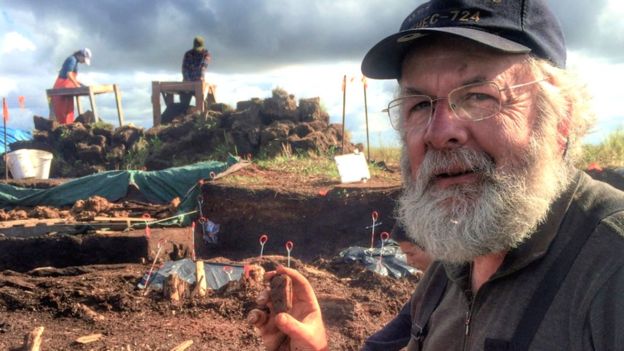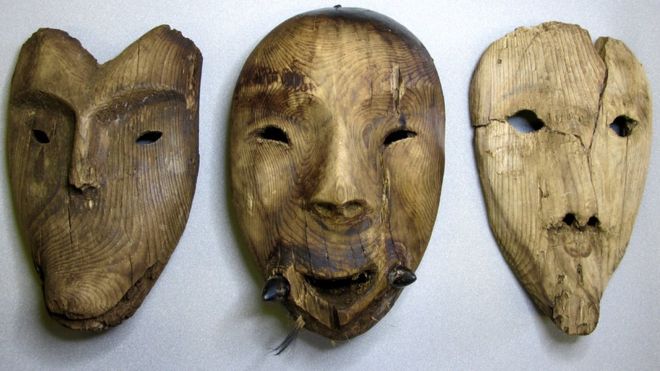“This is one of the largest collections ever recovered from a single site in Alaska, and perhaps even the whole Arctic region and is of huge significance.” – Dr. Rick Knecht.

PHOTO: bbc.com
Over the past seven years, one archaeological team has been racing the clock to rescue and preserve a vast wealth of history at Nunalleq, Alaska. Ice along the shoreline of Nunalleq is melting, causing the artifacts to deteriorate quickly. The artifacts are over four centuries old, and include wooden ritual masks, woven baskets, and grass mats – all remarkably preserved.
“The unique conditions in this arctic region mean artifacts have retained an unbelievable level of detail,” Dr. Rick Knecht, lead archaeologist on the project, said, “We have uncovered grass baskets and mats made when Shakespeare walked the earth but when we take them out of the ground the grass weaving still retains a trace of its green color and we have been amazed by the variety and intricacy of the woven patterns.”
The team is made up of archaeologists and students with the University of Aberdeen. They’ve transported over 50,000 rescued items back to the university to be prepared in order to open a new culture and archaeology center at Nunalleq.
The archaeologists and historians are working closely with the Nunalleq community, ensuring that these artifacts are kept and interpreted in the place they belong. They tell the story of the native community, and their story belongs to them.
“It is important their stories are told and we are delighted to be working with the Nunalleq community to ensure that these vital artifacts related to their lives can be shared in the place they belong.”


